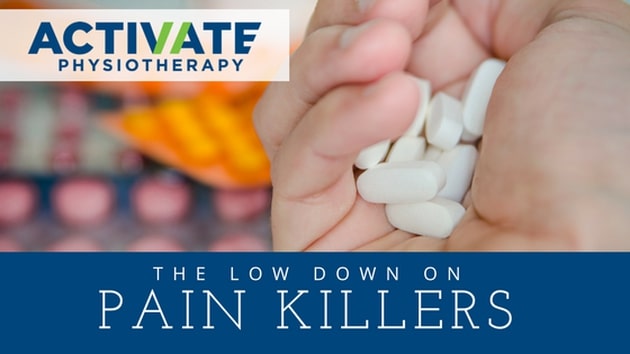Pain got you down?
Before you go reaching for the pain killers there’s a few things you need to know…
It’s reported that one in ten Aussies are in pain at any given time, and one in five experiencing chronic pain. So it’s not surprising that over-the-counter painkillers such as paracetamol and ibuprofen are a staple of most Aussies’ medical cupboards. But what exactly is the difference between the two drugs, and is one more effective than the other? We take a look.
In terms of pain killing medications, there are two main types: Opioids and non-opioids.
Opioids include drugs such as morphine, codeine, endone and oxycodone. Opioid medications are highly regulated, with most requiring a prescription from a doctor and only available at a pharmacy. They are commonly prescribed for more acute, severe pain.
In contrast, non-opioids are more commonly used to treat mild to moderate pain, may be available in non-pharmaceutical settings such as the supermarket. The two leading types of non-opioid pain-killers are paracetamol and non-steroidal anti-inflammatory drugs (NSAIDs), such as aspirin and ibuprofen.
OK… so on to the question… Which is best paracetamol or NSAIDs?
Unfortunately that simple question is not so simple to answer. It depends on the type and cause of your pain, to determine which non-opioid is best… AND to truely understand why this matters you need to understand how each medication works.
As I mentioned the most common pain-killers in most first aid kits (and women’s handbags) in Australia are paracetamol and ibuprofen. Both are used to treat mild to moderate pain such as headache, backache, period pain, arthritis or fever, but each does this in different ways.
- Paracetamol: Despite having been used as a painkiller for more than 50 years, interestingly, the way paracetamol works is not fully understood. However, it’s believed to change the processing of pain signals within the brain by reducing the brain’s perception of the pain intensity.
- Ibuprofen: As a NSAID, ibuprofen reduces inflammation by blocking the production of prostaglandins — a natural chemical the body releases when sick or injured, causing pain, inflammation and fever.
Important note:
The important thing to note here is that neither of these medications works by actually fixing the issue that is causing the pain in the first place. Even stronger opioid pain killers have their place in facilitating your recovery by bringing your pain to a level where it is manageable, you can carry on moving and performing your rehabilitation exercises and living your life (because let’s face it, no-one can afford to lay on the couch all day).
If you are suffering from pain, you should see a health professional for a full diagnosis and management plan. To get some advice from our Physio’s you can make a booking online 24/7 right here.
Anyway back to it…
As I mentioned earlier, whether you opt for paracetamol or ibuprofen usually depends on the type or cause of pain, your medical history and any other medications you may be on. Your GP and pharmacist have a wealth of knowledge to help to recommend the most suitable option based on your needs at the time.
As a general example, if you’ve suffered from an injury and have swelling and redness, an NSAID such as ibuprofen may be more suitable than paracetamol due to its anti-inflammatory benefits.
BUT… you also need to know when you should avoid certain painkillers. Obviously, neither painkiller should be taken if you’re allergic to the medication, and ibuprofen should be avoided if you’re pregnant or suffer from a gastrointestinal ulcer (NSAIDs like ibuprofen and aspirin can increase bleeding).
If you have an existing health condition or are on other medication, always check with your GP or pharmacist before taking any new medications — whether they’re over-the-counter or not. Additionally, always follow the recommended dosage and if you have an adverse reaction to a painkiller, seek medical help immediately.

